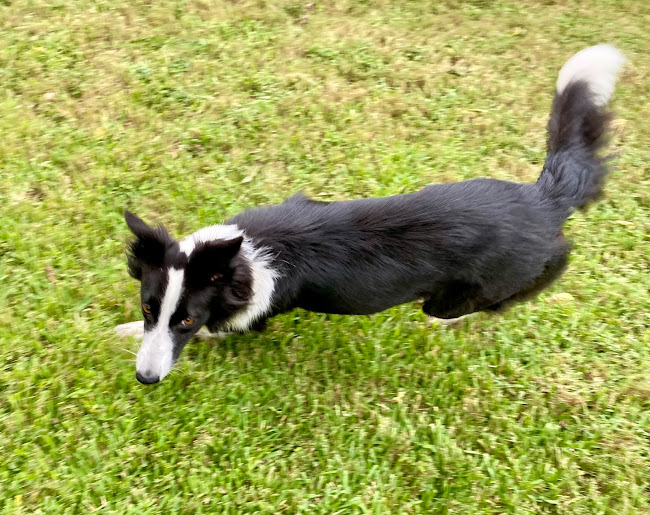
Wednesday, May 20, 2009
Meet Fee

Saturday, May 16, 2009
Friday, May 15, 2009
Refining Shoulder In
In giving the aids for shoulder in, make sure that your inside leg is rhythmically squeezing to engage the horse's inside hind. First bring the horse's shoulders in, then maintaining a lively impulsion, squeeze rhythmically with your inside leg and keep pulsing down into the inside stirrup. Be careful not to "tap" or "stomp" with your leg, as that can be misinterpreted as the cue for canter. You can reinforce your squeezing leg aid for with the whip to maintain the hind leg crossing over and to maintain the tempo.
Thursday, May 7, 2009
Of Canter and Shoulder In
In schooling second level (or any level for that matter), the rider must always remember to allow frequent periods of stretch for relaxation interspersed with frequent half halts up and engaging the hindquarters for collection.
Karen gave us another excellent canter exercise: starting at C (say in right canter), travel down the long side toward B. At B make a 10 meter half circle to the centerline, and halt at G. Pause, back up, then walk a couple strides and canter left. Track left at C and travel down the opposite long side toward E. At E make a 10 meter half circle to the centerline and halt at G. Repeat for a good second (and third!) level schooling exercise.
Concerning shoulder in, Karen had us use the fence line to enforce the correct angle and straightness of the shoulder in. Begin by making a 10 meter circle while engaging the inside hind. For schooling, leg yield over to the wall (fence line in our case), bring the shoulders in and keep the trot lively by tapping the whip behind your leg, on the haunch, or on the shoulder, and by springing in the saddle each stride and "jumping" down into the inside stirrup. I MUST engage the inside hind, and get her hindquarters crossing into the outside rein.
Karen gave us another excellent canter exercise: starting at C (say in right canter), travel down the long side toward B. At B make a 10 meter half circle to the centerline, and halt at G. Pause, back up, then walk a couple strides and canter left. Track left at C and travel down the opposite long side toward E. At E make a 10 meter half circle to the centerline and halt at G. Repeat for a good second (and third!) level schooling exercise.
Concerning shoulder in, Karen had us use the fence line to enforce the correct angle and straightness of the shoulder in. Begin by making a 10 meter circle while engaging the inside hind. For schooling, leg yield over to the wall (fence line in our case), bring the shoulders in and keep the trot lively by tapping the whip behind your leg, on the haunch, or on the shoulder, and by springing in the saddle each stride and "jumping" down into the inside stirrup. I MUST engage the inside hind, and get her hindquarters crossing into the outside rein.
Subscribe to:
Posts (Atom)


